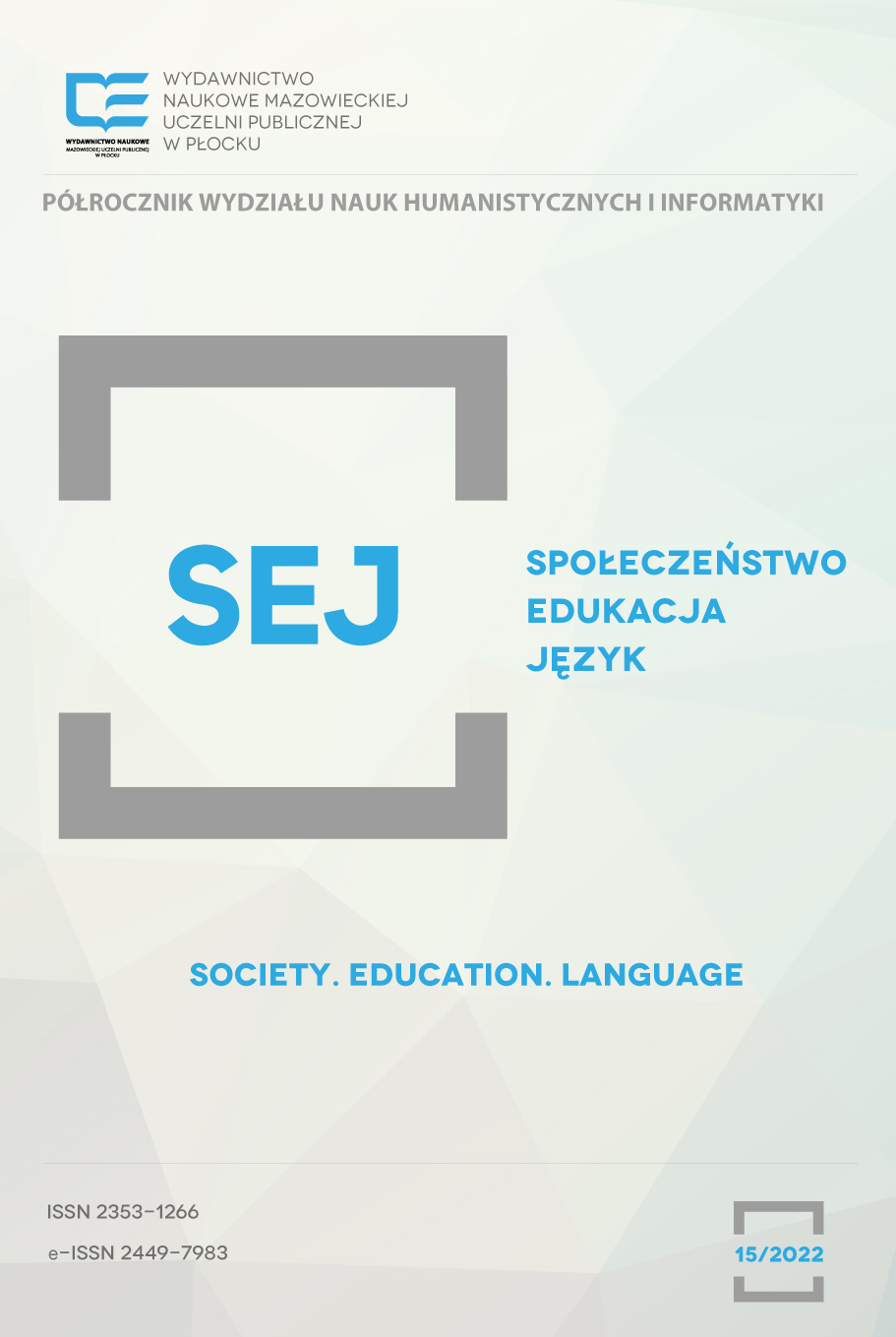DISTANCE LEARNING - NEW CHALLENGES FOR SCHOOL PRACTICE
DOI:
https://doi.org/10.19251/sej/2022.15(2)Keywords:
distance learning, methods, forms, techniques, tools of remote workAbstract
Abstract
The current situation in Poland has obligated teachers to use tools for remote work. Such solutions presented teachers and students with new tasks and challenges that had to be met. This method of education brings many benefits, as it allows teachers and students to keep their work flowing, and is a stimulus especially for those who do not use educational applications, platforms or online tools on a daily basis to shape new skills and competences.
Online learning requires a completely different methodology, work planning and different types of tasks and activities. The teacher should assume the role of a tutor and mentor who can motivate and inspire students to engage and deepen their knowledge on their own, which will ensure effective distance learning.
However, the period of remote education that has been going on for almost a year has shown that the situation is much more complex. The technological equipment of schools, the availability of equipment and the Internet in students' homes, the level of digital and information competences of teachers and students, the availability of digital teaching materials, and above all a number of social issues, made remote education a very big challenge for teachers and students.
The aim of the research carried out in the period from January to March 2021 among 50 biology teachers from the Małopolskie Voivodeship was to diagnose the functioning of remote education at school, in the new school reality and the challenges that were faced by schools, teachers, parents and, above all, students.
The results of the research showed a number of logistical and hardware problems, problems related to the level of teachers' preparation for the proper conduct of remote education at school, adapting teaching and learning methods and techniques, monitoring and verifying student progress, as well as building relations between the teacher and the student.
References
Barabasz G. 2016. Nauczanie i uczenie się w sieci. Kompetencje nauczyciela w kształceniu internetowym. Wydawnictwo Naukowe Uniwersytetu im. A. Mickiewicza, Poznań, s. 179.
Barley, Z., Lauer, P. A., Arens, S. A., Apthorp, H. S., Englert, K. S., Snow, D. i Akiba, M. 2002. Helping at-risk students meet standards: A synthesis of evidence-based classroom practices. Den-ver, CO: Mid-continent Research for Education and Learning
Bilicki T. 2020. Jak pracować z uczniem w kryzysie w czasie pandemii Covid – 19, Pyżalski J. ed. Edukacja w czasach pandemii wirusa Covid-19. Z dystansem o tym, co robimy obecnie jako nauczyciele. Wyd. EduAkcja, Warszawa
Cieśla P. 2020. Kształtowanie wybranych kompetencji kluczowych w ramach edukacji chemicznej a multimedia. Walosik A. and Żeber – Dzikowska I. ed. Edukacja przyrodnicza. W kręgu teorii i praktyki. Wyd. Naukowe UP, Kraków
Hattie J. 2015. Widoczne uczenie się dla nauczycieli, Biblioteka Szkoły Uczącej się. CEE, Warszawa
Kaczmarzyk M. 2020. Neurobiologiczny kontekst edukacji zdalnej. Pyżalski J. ed. Edukacja w czasach pandemii wirusa Covid-19. Z dystansem o tym, co robimy obecnie jako nauczyciele. Wyd. EduAkcja, Warszawa
Mayor F. 2001. Przyszłość świata. UNESCO 1999. Red. nauk. przekładu W. Rabczuk. Warszawa, s. 378.
Mize, C. D., Gibbons, A. 2000. More than inventory: Effective integration of instructional technology to support student learning in K-12 schools, (ERIC Document Reproduction Service No. ED 444 563)
Ostrowska M., Sterna D. 2015. Technologie informacyjno – komunikacyjne na lekcjach. Przykładowe konspekty i polecane praktyki. Wyd. CEO, Warszawa
Page M. S. 2002. Technology-enriched classrooms: Effects on students of low socioeconomic status. Journal of Research on Technology in Education, 34(4), 389–409.
Penkowska G. ed. 2014. Społeczne konteksty edukacji medialnej. Wyd. Naukowe Katedra
Pitler H., Hubbell E.R., Kuhn M. 2015. Efektywne wykorzystanie nowych technologii na lekcjach. Wyd. Centrum Edukacji Obywatelskiej, Ośrodek Rozwoju Edukacji, Warszawa
Polya G. 1975. Odkrycie matematyczne. O rozumieniu, uczeniu się i nauczaniu rozwiązywania zadań. Wydawnictwo Matematyczno – Techniczne, Warszawa
Pyżalski J. 2020. Co jest obecnie ważne, a co mniej w działaniach szkół i nauczycieli. Pyżalski J. ed. Edukacja w czasach pandemii wirusa Covid-19. Z dystansem o tym, co robimy obecnie jako nauczyciele, EduAkcja, Warszawa
Schacter, J., Fagnano, C. 1999. Does computer technology improve student learning and achievement? How, when, and under what conditions?, Journal of Educational Computing Research, 20(4), 329–343.
Skurzyński K. 1996. Niektóre metody rozwijania matematycznej aktywności uczniów, Wydaw. Naukowe Uniwersytetu Szczecińskiego, Szczecin s. 12
Waxman, H. C., Connell, M. L., Gray, J., A. 2002. Quantitative synthesis of recent research on the effects of teaching and learning with technology on student outcomes, Naperville, IL: North Central Regional Educational Laboratory
Witkowski J. 2020. Organizacja zdalnego nauczania, Pyżalski J. ed. Edukacja w czasach pandemii wirusa Covid-19. Z dystansem o tym, co robimy obecnie jako nauczyciele, EduAkcja, Warszawa
Zintegrowana Strategia Umiejętności 2030, 2019, Ministerstwo Edukacji Narodowej
Online Resources
[www1] Prezi, https://prezi.com/ (access: 27.05.2021)
[www2] Infografiki, https://www.canva.com/pl_pl/tworzyc/infografiki/ (access: 26.01.2020)
[www3] Witryny Google, https://sites.google.com/new (access: 26.05.2021)
[www4] WebQuest Generator, http://ii.uwb.edu.pl/generator/ (access: 26.05.2021)
[www5] Komisja Europejska | Unia Europejska (europa.eu) (access: 27.05.202
